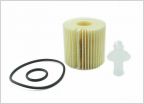-
Welcome to 4Runners.com!
You are currently viewing as a guest! To get full-access, you need to register for a FREE account.
As a registered member, you’ll be able to:- Participate in all 4Runner discussion topics
- Transfer over your build thread from a different forum to this one
- Communicate privately with other 4Runner owners from around the world
- Post your own photos in our Members Gallery
- Access all special features of the site
Auxiliary high-beam tap to relay, lights flickering in DRL mode
Discussion in '5th Gen 4Runners (2010-2024)' started by mynameistory, Mar 3, 2020.


 Oil filters mixup - 04152-YZZA1 vs 04152-YZZA5
Oil filters mixup - 04152-YZZA1 vs 04152-YZZA5 New to Toyotas
New to Toyotas 2013 4Runner Spare key
2013 4Runner Spare key How frequently should I wash 4Runner underbody?
How frequently should I wash 4Runner underbody? Best Portable Air Compressors
Best Portable Air Compressors Steering wheel shake and pull. KO2s to blame?
Steering wheel shake and pull. KO2s to blame?
